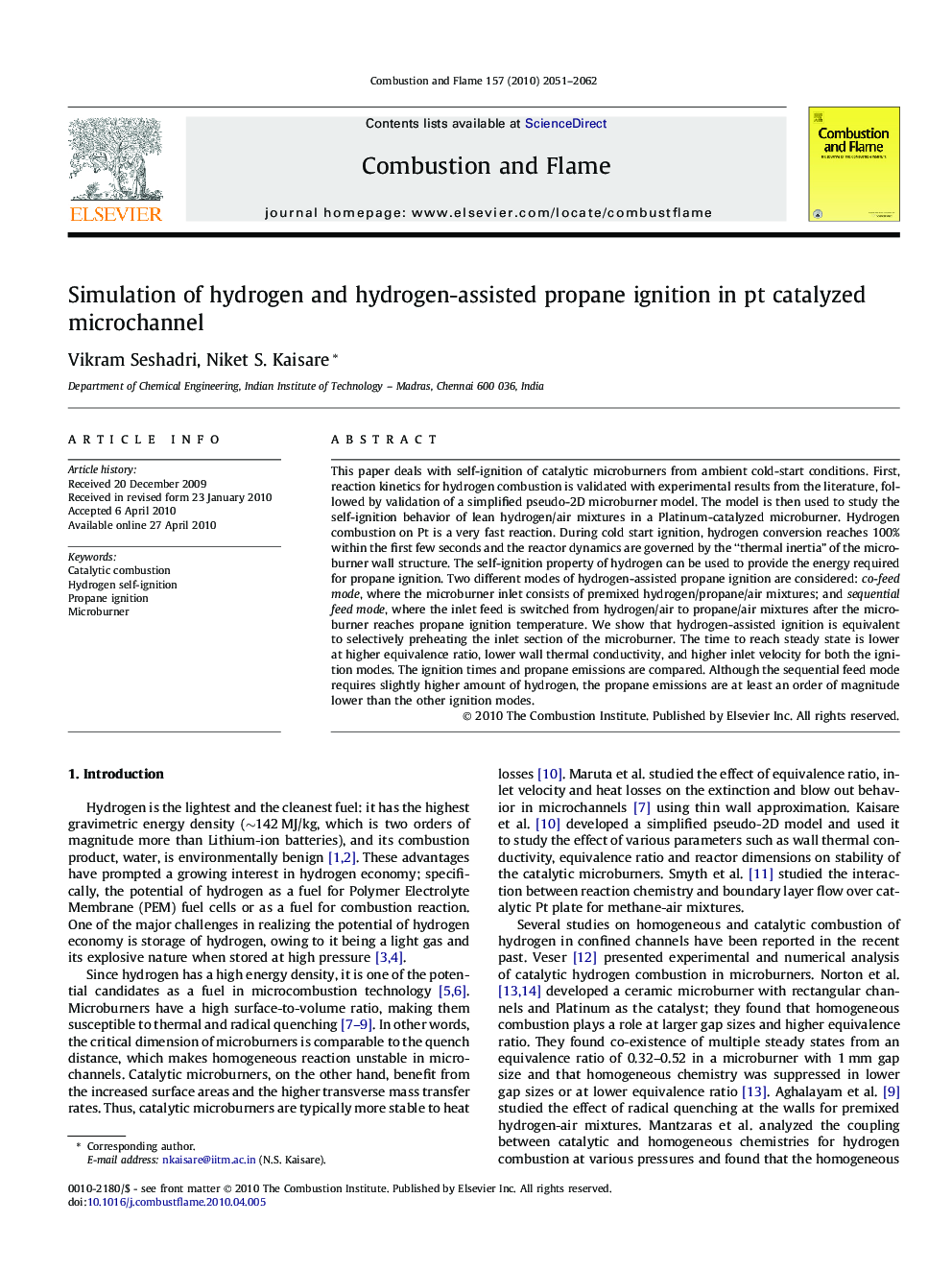| Article ID | Journal | Published Year | Pages | File Type |
|---|---|---|---|---|
| 166678 | Combustion and Flame | 2010 | 12 Pages |
This paper deals with self-ignition of catalytic microburners from ambient cold-start conditions. First, reaction kinetics for hydrogen combustion is validated with experimental results from the literature, followed by validation of a simplified pseudo-2D microburner model. The model is then used to study the self-ignition behavior of lean hydrogen/air mixtures in a Platinum-catalyzed microburner. Hydrogen combustion on Pt is a very fast reaction. During cold start ignition, hydrogen conversion reaches 100% within the first few seconds and the reactor dynamics are governed by the “thermal inertia” of the microburner wall structure. The self-ignition property of hydrogen can be used to provide the energy required for propane ignition. Two different modes of hydrogen-assisted propane ignition are considered: co-feed mode, where the microburner inlet consists of premixed hydrogen/propane/air mixtures; and sequential feed mode, where the inlet feed is switched from hydrogen/air to propane/air mixtures after the microburner reaches propane ignition temperature. We show that hydrogen-assisted ignition is equivalent to selectively preheating the inlet section of the microburner. The time to reach steady state is lower at higher equivalence ratio, lower wall thermal conductivity, and higher inlet velocity for both the ignition modes. The ignition times and propane emissions are compared. Although the sequential feed mode requires slightly higher amount of hydrogen, the propane emissions are at least an order of magnitude lower than the other ignition modes.
